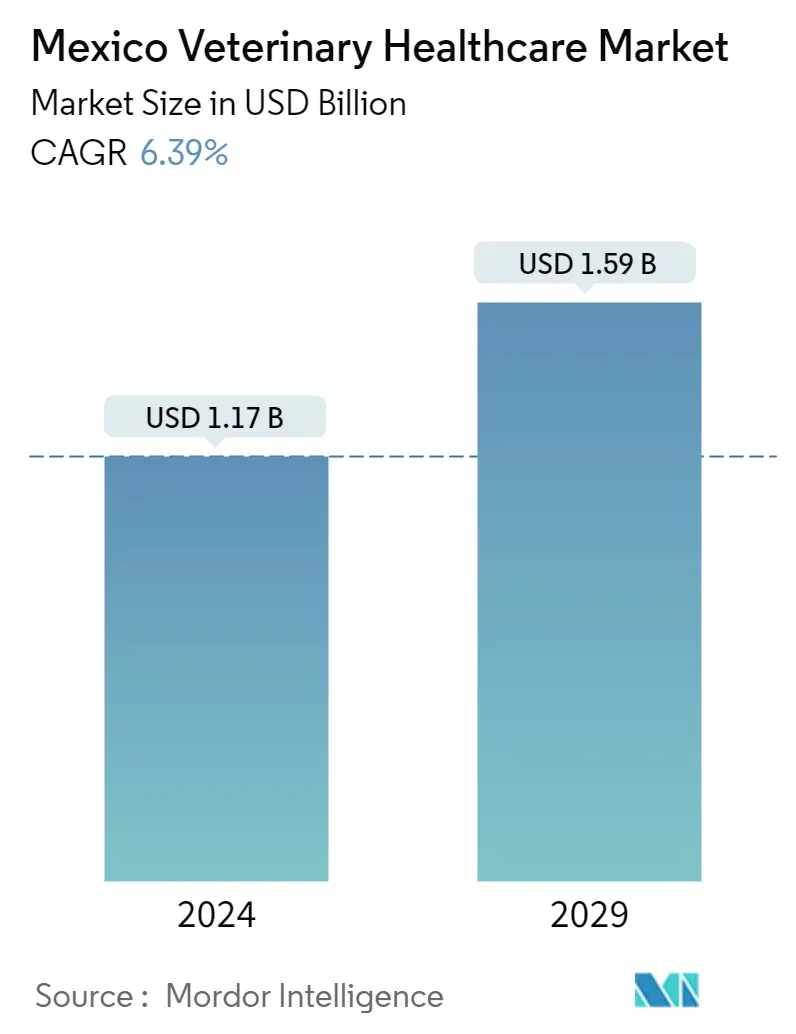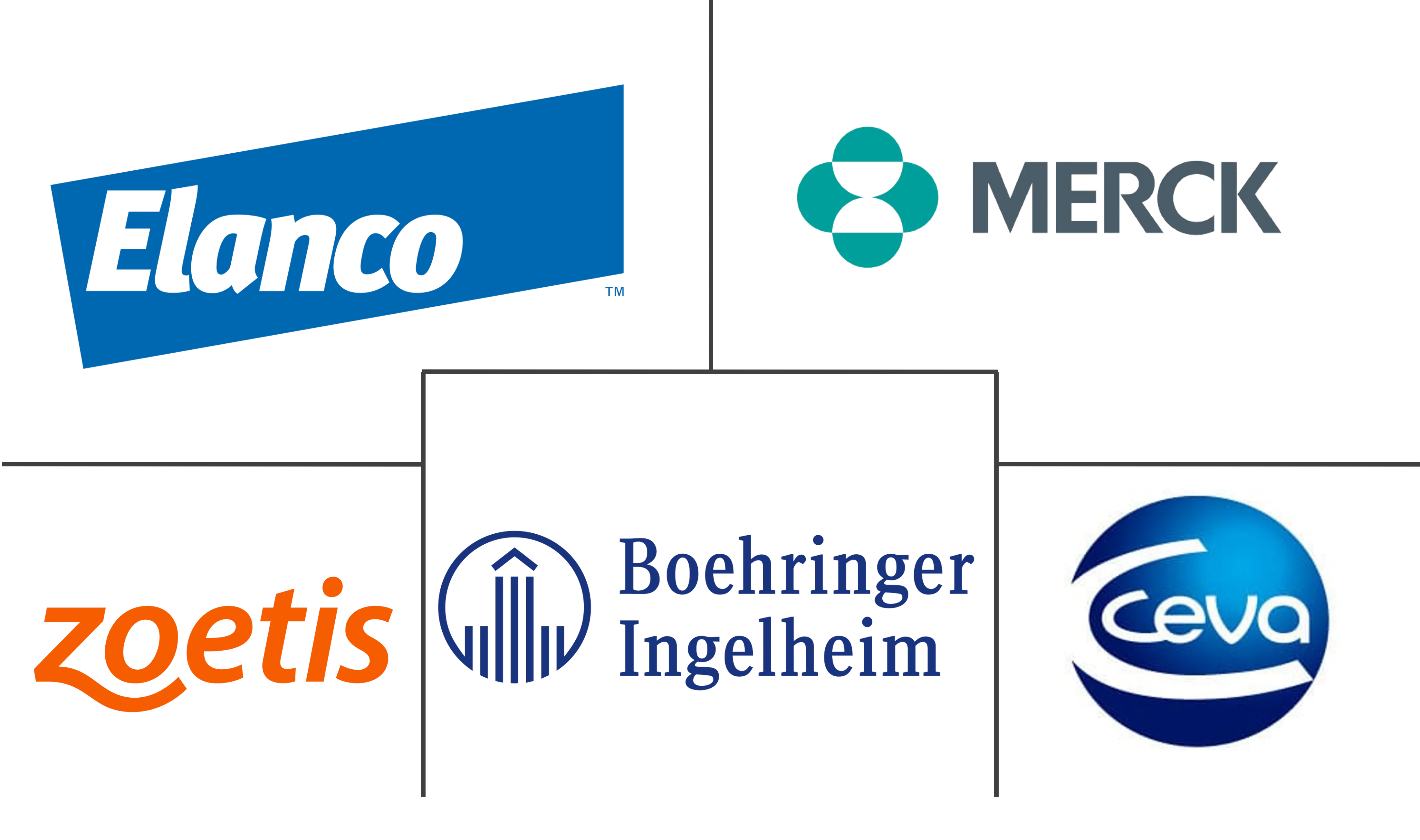Market Size of Mexico Veterinary Healthcare Industry

| Study Period | 2019 - 2029 |
| Base Year For Estimation | 2023 |
| Forecast Data Period | 2024 - 2029 |
| Market Size (2024) | USD 1.17 Billion |
| Market Size (2029) | USD 1.59 Billion |
| CAGR (2024 - 2029) | 6.39 % |
Major Players
*Disclaimer: Major Players sorted in no particular order |
Need a report that reflects how COVID-19 has impacted this market and its growth?
Mexico Veterinary Healthcare Market Analysis
The Mexico Veterinary Healthcare Market size is estimated at USD 1.17 billion in 2024, and is expected to reach USD 1.59 billion by 2029, growing at a CAGR of 6.39% during the forecast period (2024-2029).
The COVID-19 pandemic has impacted the animal healthcare market by increasing the costs of animal testing and veterinary care. Supply chain disruptions and shortages of veterinary medicines were observed in several countries, primarily due to the temporary lockdowns of manufacturing sites, export bans, and increased demand for medicine for the treatment of COVID-19. For instance, according to an article published in February 2021, the demand for veterinary services and visits to pet clinics reduced in the country during the COVID-19 pandemic, thus impacting the growth of the veterinary healthcare market. However, with pet clinic services resuming and the relaxation of COVID-19 restrictions, the Mexican veterinary healthcare market is expected to grow over the forecast period.
The increasing productivity at the risk of emerging zoonosis and advancements in technology leading to innovations in animal healthcare are boosting the market's growth. For instance, according to an article published in July 2021, 600 confirmed cases of Rickettsia infections were reported in Mexico, % of which occurred in Yucatan in 2020. This factor increased the demand for proper vaccinations in the country, which is further anticipated to increase the need for proper veterinary healthcare system and contribute to the market's growth over the forecast period.
As per the data published by the Global Health Security Index, 2021, Mexico, the Ministry of Health published its National Health Promotion Days plan, which includes the Guidelines for Disease Prevention and Control Programs: Zoonosis. The recommendations reflect on the idea of One Health and notably address campaigns to stop and prevent the spread of brucellosis, rabies, and porcine tapeworm. Such initiatives are projected to create opportunities for companion healthcare products, thus driving the veterinary healthcare market over the forecast period.
As per the same source, the guidelines also mentioned the 2019-2024 Specific Action Program (PAE) for Zoonosis Prevention and Control in Public Health. Such activities are expected to increase awareness regarding zoonotic diseases and their spread among the population, as well as increase the demand for specific vaccination for companion animals. Such developments may fuel the market's growth over the forecast period.
Technological advancements in the animal healthcare sector have been increasing over time, leading to the development of smart wearable devices, livestock monitoring systems, electronic recording systems, which are expected to boost the market's growth over the forecast period. For instance, as per an article published in March 2021, the use of AI in animal health has made it feasible to tackle extremely complicated problems, such as those found in quantitative and predictive epidemiology, animal precision-based medicine, or the investigation of host-pathogen interactions.
As per the same source, other AI approaches such as multi-agent models, which take a more mechanical approach, have been applied in an explicit spatial context for the transmission of vector-borne pathogens, which have proven to be sufficiently adaptable for several animal studies. Thus, the rising utilization of advanced technologies to study different parameters in animals are expected to boost the growth of the veterinary healthcare market over the forecast period.
However, the increasing cost of animal healthcare and veterinary testing, scarcity of arable land and water, and the use of counterfeit medicines are likely to hamper the market's growth over the forecast period.
